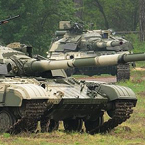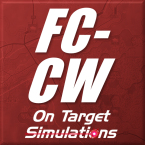IronMikeGolf
Posts: 899
Joined: 3/19/2010
Status: offline

|
Don't get hung up on IR vs NV. The vast majority of these systems are image intensifiers based on photomultiplier tubes (see Starlight Scope). They are all passive, however, low levels of ambient light (moonless nights, overcast not near urban areas, etc) will drastically reduce the range at which targets can be detected and identified. Of greatest interest, of course, are tanks sights. Let's look at the TPN series. Ranges quoted are often for 100% illumination (moon's surface fully lit). The range of the sight can be increased by using battlefield illumination. This can be flares, searchlight (either visible or IR), even headlights. Visible and near infrared spectrum light both work. IR searchlight are mounted on fighting vehicles because, if you use a visible spectrum light, you can easily be effectively engaged using day sights. Regardless of illumination, there is an upper range limit. This is determined by the diameter of the optics and the magnification.
Soviet light amplification tank sights:
TPN-1: range 600 meters/800 meters with battlefield illumination
TPN 3 (Generation 1): 850 m/1200 m
TPN 3K (Gen 2): 1100 m/1200 m
TPN 3KS (Gen 3): 1200 m/1200 m
Let's look at night vision systems for US infantry platoons:
PVS-5: image intensifier goggles, detect troops and vehicles out to 150 m. Short range IR illuminator for map reading, etc (about 10 m range)
PVS-2: Gen 1 small arms sight, 300 m in starlight/400 m in moonlight
PVS-4: Gen 2 small arms sight, 400 m starlight/600 m moonlight
TVS-2: .50 cal MG or tripod mounted, 800 starlight/1000 m moonlight
TVS-5: .50 cal MG or tripod mounted, 1000 starlight/1200 m moonlight
PAS-7: Handheld thermal image viewer, troops 400 m/vehicles 1000 m
TAS-5: thermal sight for Dragon ATGM, detects vehicles at 2000,/identify vehicles at 1200 m
In the game, we simplify this plethora of equipment and capabilities into the above mentioned categories.
_____________________________
Jeff
Sua Sponte
|
 Printable Version
Printable Version







 )
)  New Messages
New Messages No New Messages
No New Messages Hot Topic w/ New Messages
Hot Topic w/ New Messages Hot Topic w/o New Messages
Hot Topic w/o New Messages Locked w/ New Messages
Locked w/ New Messages Locked w/o New Messages
Locked w/o New Messages Post New Thread
Post New Thread